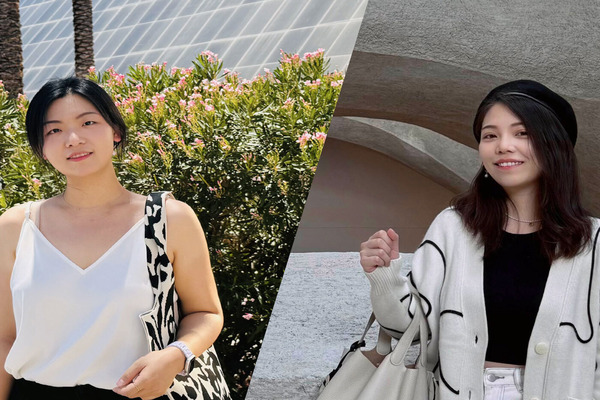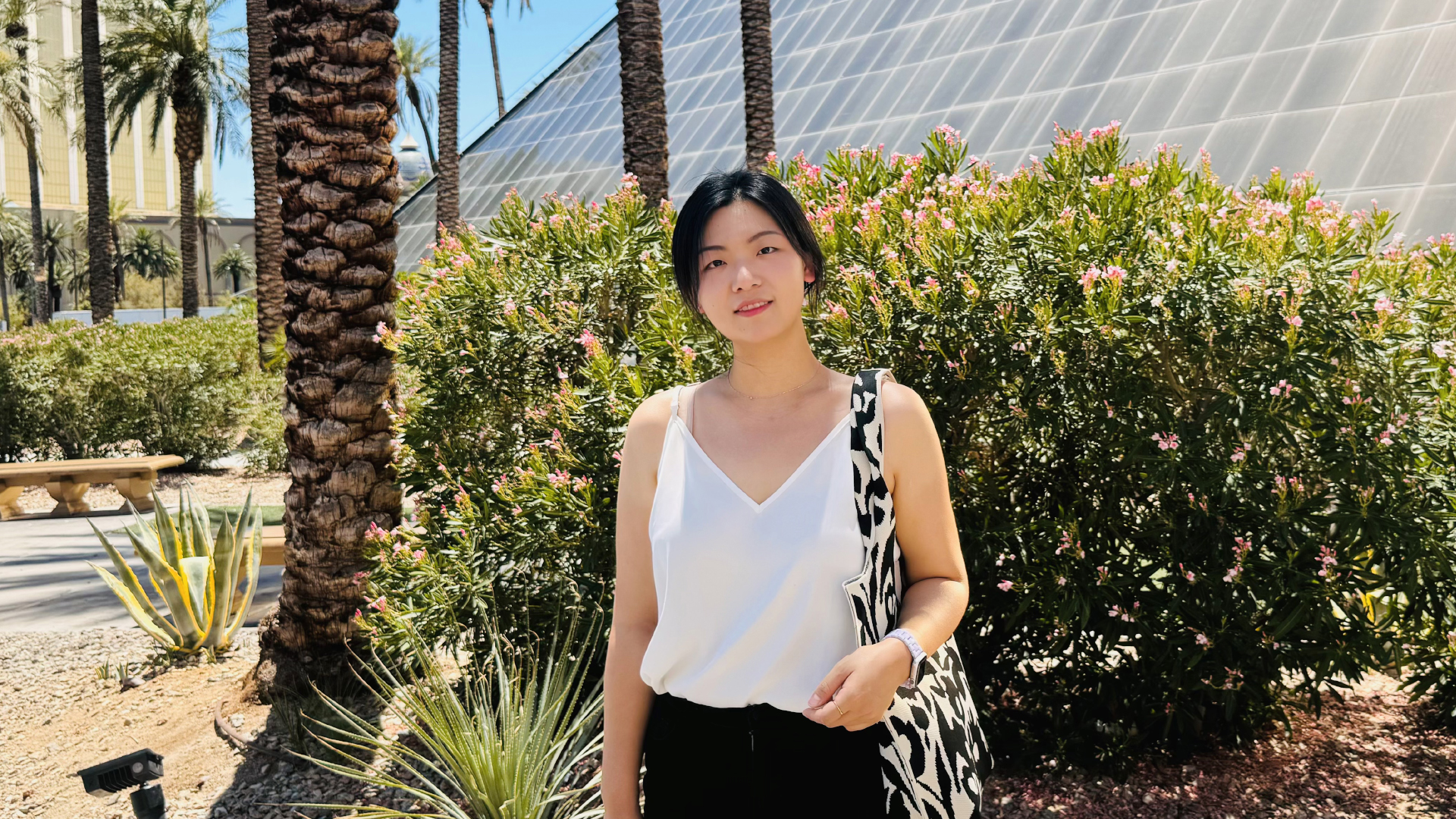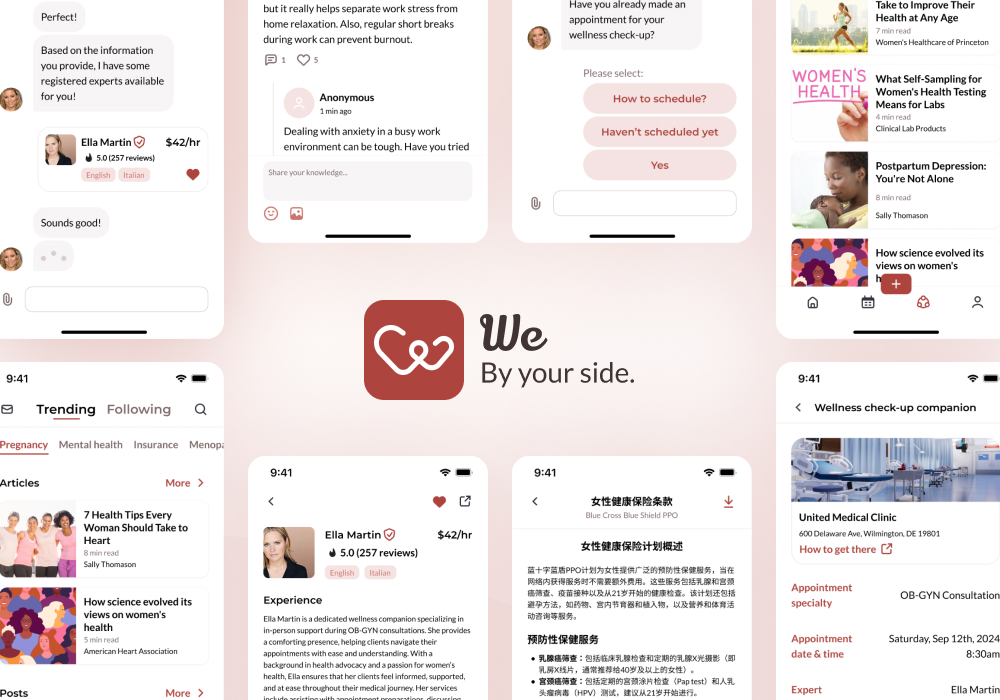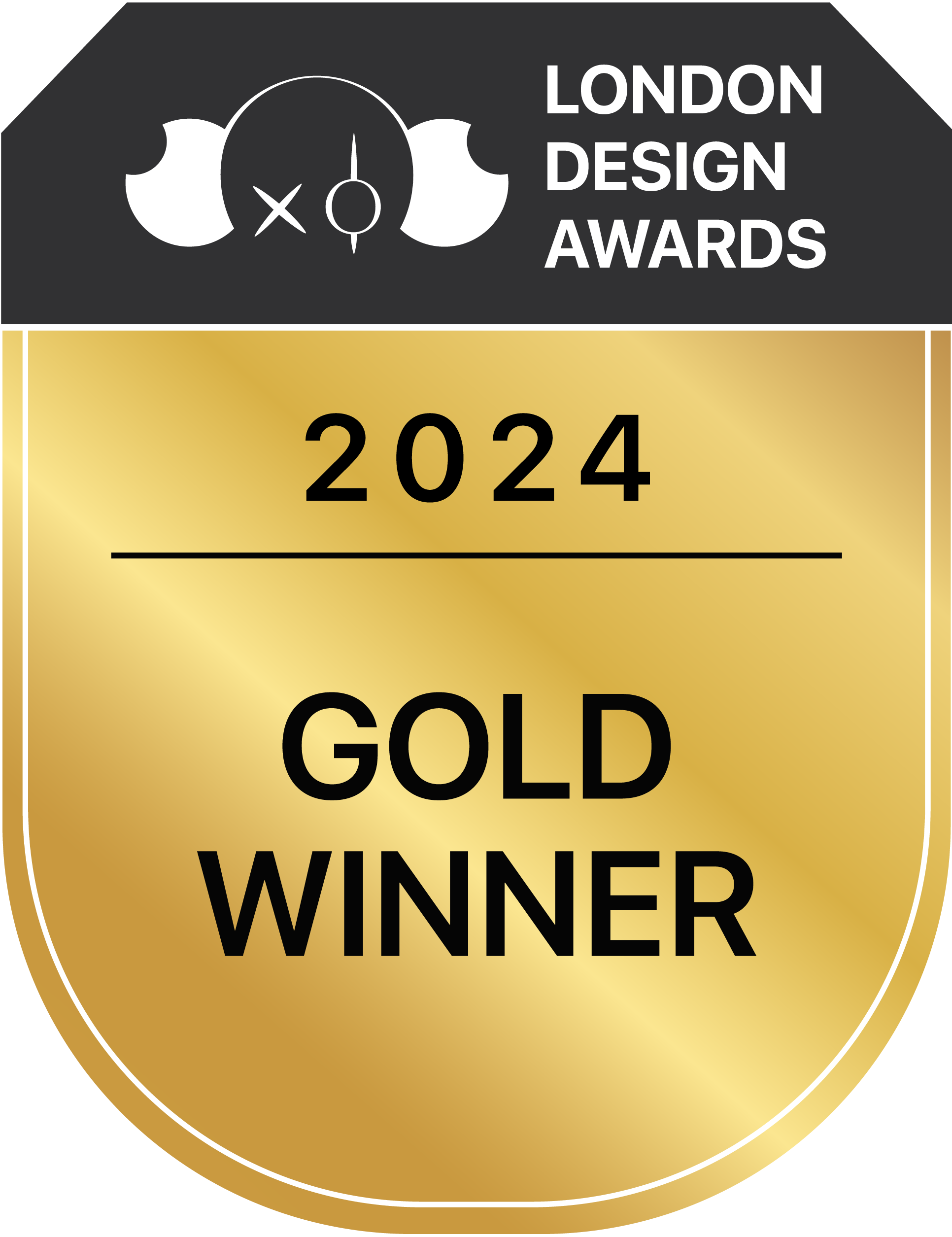
Shuting Jiang & Tianyue Wu
1. Please give us a brief bio of yourself and your design background.
Shuting: Hello, I'm Shuting Jiang, a senior product designer with 8 years of experience crafting user-centric digital solutions. I specialize in creating intuitive and visually engaging interfaces that align with business goals while providing exceptional user experiences. My expertise spans user research, prototyping, and cross-functional collaboration, allowing me to lead projects that bring innovative and impactful designs to life.
Tianyue: Hello, I'm Tianyue, a senior product designer at the junction of creativity and empathy. My journey in product design has been inspired by the fact that I feel a passion for creating solutions that not only exude beauty but also touch users' hearts. I have led projects that cut across the financial and tech industries with innovativeness and sensitivity to user needs. From intuitively redesigning wealth management tools to e-commerce solutions, my approach is fluidly artistic and deeply committed to refining the user experience.
2. What made you become/why did you choose to become a designer/artist?
Shuting: My design journey began rooted in a decade-long passion for painting, an experience that deeply influenced my appreciation for aesthetics and visual storytelling. After college, I transitioned into user experience design, drawn by its potential to blend artistry with functionality. This field not only allows me to employ my creative skills but also to solve real-world problems, making technology more accessible and enjoyable. As a designer, I aim to leverage my artistic background and technical expertise to create impactful projects that improve people's lives, confirming my belief that good design is about effective communication and enhancing human interaction.
Tianyue: My interest in this field of design was sparked by my passion for making things better and more inclusive. Right since my childhood, I have been inspired by how design shapes the way we connect with the world around us but can also improve it. Because technology holds the potential to serve people in a way that understands people and addresses their needs truly, being a designer has therefore become a personal choice. I've always believed that technology should be a tool for empowerment, not exclusion. That focus on empathy guides my design philosophy to create solutions that are not just effective but also accessible and considerate of the huge variety of experiences all users have. I want to connect the gap between human needs and technological improvements, ensuring in every product design that I have solved problems but have done so with an in-depth understanding of the people it serves.
3. What does “design” mean to you?
Shuting: To me, design is about creating solutions that improve people's lives. It's not just about aesthetics; it's about understanding user needs and crafting experiences that are functional, intuitive, and meaningful. Design is a way to solve problems, tell stories, and make connections that resonate on a human level.
Tianyue: I think design is something pervasive that shapes our daily existence subtly and inherently in every aspect of our living. It draws its roots from the intrinsic beauty of nature, sharp rhythms of mathematics, and intricate patterns in human behavior. All these influences amalgamate to create a framework that not only dictates the functionality of our environments but also enhances the quality of our living. To me, the very term "design" doesn't just stand for something beautiful; it stands for careful creation that has taken into account the efficiency and usability aspects in a harmonious way.
4. To you, what makes a “good” design?
Tianyue: A good design is one that is both beautiful and functional. Be it the layover of a park imitating a natural landscape or be it the user interface of an app easing through apparently complex tasks, good design smoothes and makes life more enjoyable. It exists even in the minutest of details, and its impact is great: improving accessibility, simplifying complexities, and raising our general quality of life. At its core, design is a reflection of what we understand about the world and what, through it, we model into solutions that really can speak to our needs and aspirations.
5. How did you come up with the idea for your award-winning design?
Shuting: The idea came from listening to the real-life experiences of immigrant women. We heard countless stories of women struggling to navigate the healthcare system due to language barriers and cultural differences. These stories deeply moved us and highlighted a significant gap in the existing healthcare services.
Tianyue: We realized there was a pressing need for a solution that could bridge these gaps, making healthcare more accessible and understandable for immigrant women. This understanding inspired us to create a platform that combines advanced technology with empathetic, human-centered design.
6. What was your main source of inspiration for this design?
Shuting: Our main source of inspiration came from the courageous immigrant women who shared their stories with us. Their resilience in the face of adversity and their determination to access healthcare despite numerous challenges deeply inspired us.
Tianyue: We wanted to create a tool that honored their strength and provided the support they needed. Additionally, the growing recognition of the need for more inclusive healthcare services globally further motivated us to develop a solution that could make a real difference.
7. Do you think your country and its cultural heritage has an impact on your design process?
Shuting: Absolutely. Our country's rich cultural diversity and emphasis on inclusivity played a significant role in shaping our design process. Living in a multicultural society has given us a deep appreciation for the varied backgrounds and experiences of immigrant women. This awareness guided us in creating a platform that is not only technically proficient but also culturally sensitive. We wanted to ensure that our solution respected and honored the cultural heritage of our users, providing them with a tool that feels welcoming and supportive.
8. Congratulations! As the winner of the London Design Awards, what does it mean to you and your company and team to receive this award distinction?
Tianyue: For a project like ours, to win in the London Design Awards is just really huge. This just legitimizes the hard work, dedication, and passion that both of us have put into this project. For the most part, this award represents the recognition internationally for which we have been fighting to create an inclusive and supportive healthcare platform. More than that, it means solutions targeting the problems of immigrant women are legitimate concerns warranting more debate and development.
9. Can you explain a bit about the winning work you entered into the London Design Awards, and why you chose to enter this project?
Shuting: Our winning entry is a comprehensive healthcare platform designed to support immigrant women in navigating healthcare systems. It features AI-driven real-time translation, culturally sensitive companion services, and a supportive community forum. We chose to enter this project because it addresses a pressing and often overlooked need in healthcare.
Tianyue: The positive feedback from the first users reaffirmed our belief in what the project could achieve, and felt the London Design Awards provided the perfect opportunity and platform for not only showcasing an innovative approach but also gaining further valuable recognition and feedback from the design community itself.
10. What were the main challenges you faced during the design process, and how did you overcome them?
Shuting: The main challenge is making it accessible and respectful of immigrant women's unique needs. Language barrier is a significant obstacle; to address this, we created an AI-driven translation tool that provides accurate, real-time translations. Cultural differences make the situation even worse. Many healthcare systems are not equipped to accommodate the diverse backgrounds of immigrant women. Consequently, our platform had to offer culturally sensitive support. This included training our experts in cultural competence and the ethical handling of sensitive information.
Tianyue: Any person would find the healthcare system very challenging, especially if they do not know their way about it. This required us to invent easy-to-use tools so that healthcare procedures and insurance systems are simple to understand and provide access to the same. Another challenge was protecting privacy protection. We work without collecting any kind of excess personal data; it also involves high-security parameters for protecting information shared on the website.
11. How do you think winning this award will impact your future as a designer?
Shuting: Winning this award is incredibly encouraging and validates the hard work and passion we’ve put into our project. It motivates us to continue pushing the boundaries of creativity and innovation in our future projects.
Tianyue: It’s a milestone that will open new doors, provide opportunities for greater visibility, and allow us to connect with other professionals in the design community.
12. What are your top three (3) favorite things about the design industry?
Shuting: For me, in the product design industry, one of my favorite things is the user-centric focus, which ensures that products and services genuinely meet user needs, enhancing usability and satisfaction. Another one is the creative freedom it offers, allowing designers to experiment with styles, concepts, and mediums, pushing traditional aesthetic boundaries to create unique experiences. Lastly, creative and design influence and reflect cultural trends across the globe is profoundly impactful. This cultural influence not only fosters a broader understanding of diverse communities but also contributes to societal change, making design a powerful tool for global communication.
Tianyue: What I love most about working in the design industry is the potential to integrate new technology into everyday life, transforming futuristic ideas into practical solutions that improve the quality of life, work, and play. The balance between aesthetics and functionality is exciting, creating designs that are both beautiful and user-friendly. Additionally, the vibrant design community, with its constant flow of ideas, collaboration, and shared passion, inspires me to push the boundaries of my creativity.
13. Where do you see the evolution of design industry going over the next 5-10 years?
Shuting: In the next 5-10 years, I see the design industry becoming even more integrated with technology, using AI and machine learning to create smarter and more personalized user experiences. Additionally, design will increasingly overlap with other fields like psychology, anthropology, and data science, leading to more holistic and well-informed design solutions that consider multiple aspects of the human experience.
Tianyue: Also, in the coming years, sustainability and ethical design will gain prominence, driving the industry towards eco-friendly practices and materials, and emphasizing the social impact of design decisions. Alongside this, inclusivity will remain a critical focus, with an increased emphasis on creating designs that accommodate a broader spectrum of human experiences and conditions.
14. What advice do you have for aspiring designers who want to create award-winning designs?
Shuting: My advice is to always stay curious and keep learning. Understand your users deeply and empathize with their needs. Don’t be afraid to experiment and take risks – innovation often comes from stepping outside of your comfort zone. Also, seek feedback constantly and be open to iteration. Collaboration and openness to different perspectives can elevate your work to new heights.
15. What resources would you recommend to someone who wants to improve their skills in the design industry?
Tianyue: I would recommend self-study through online courses like Coursera and Udemy, which hold a myriad of topics on design. Following industry leaders on social media, keeping up with design blogs, and joining forums like Reddit's r/design will help in understanding and motivation. On a greater note, practical experience does account for much—actual work on real projects, even personal ones, shall go a long way in boosting your skills.
16. What is your key to success? Any parting words of wisdom?
Shuting: Always keep learning and stay curious. The best designers are those who continually seek to improve themselves and their work, are open to critique, and are passionate about solving problems creatively. Great design is not just about how things look but how they work and the experience they create.
Tianyue: The key to success in design is empathy. Understanding and caring about the people who will use your designs is crucial. Always be open to learning and adapting. My parting advice is to stay passionate and persistent. Design is a journey, and every project is an opportunity to grow and make a difference. Believe in your creativity and its potential to change the world for the better.


